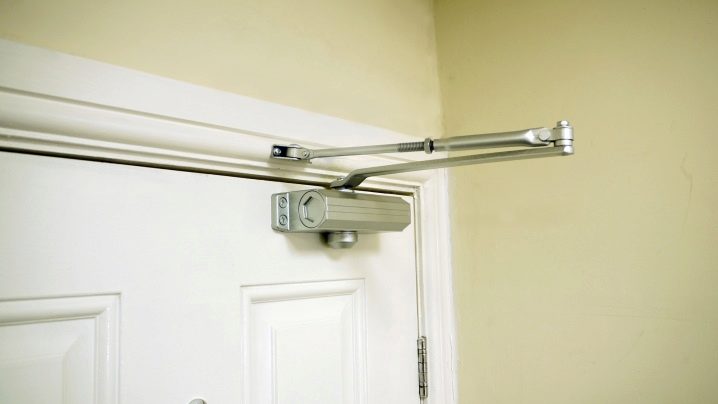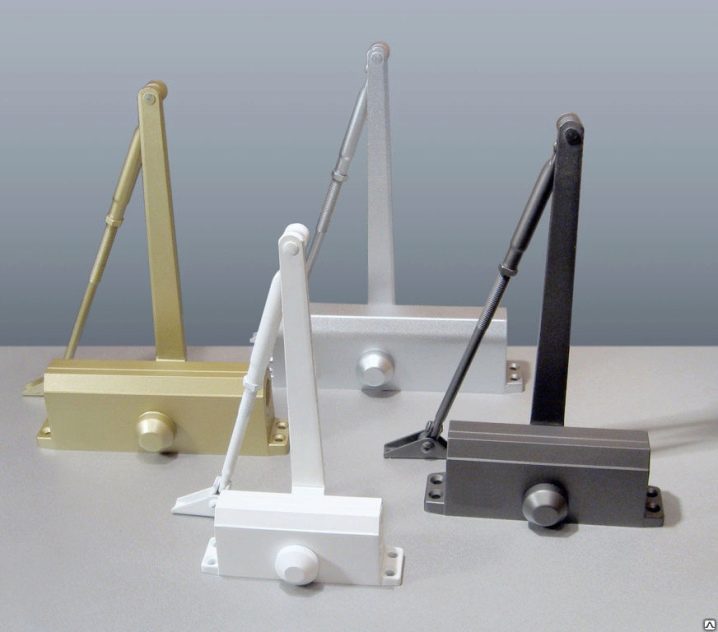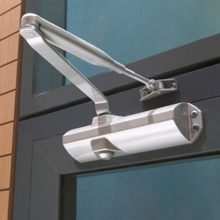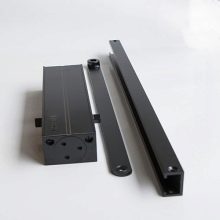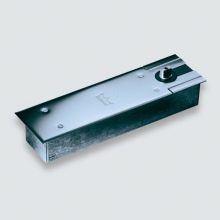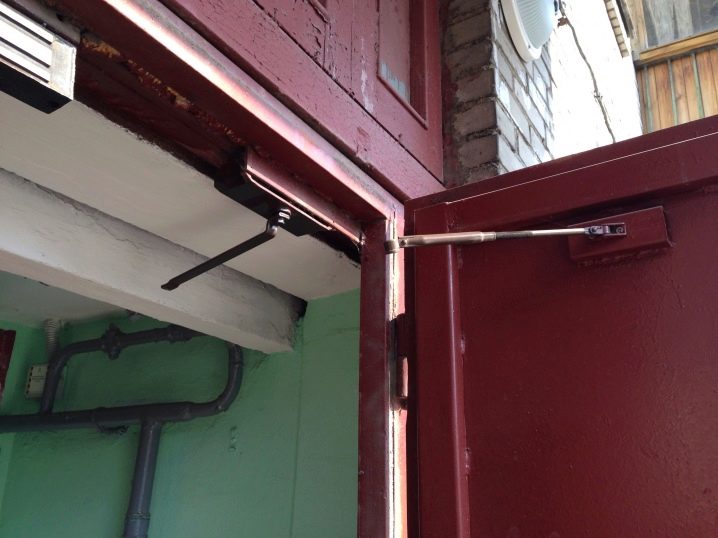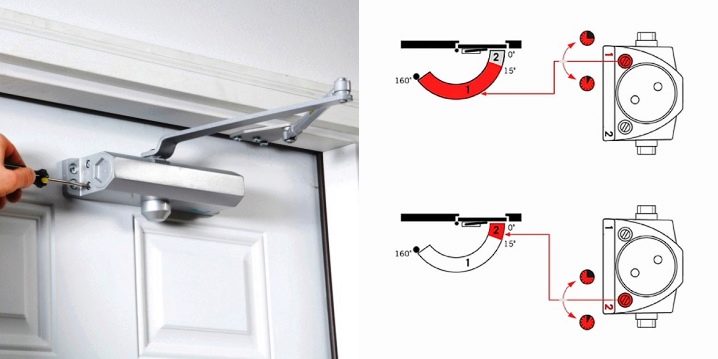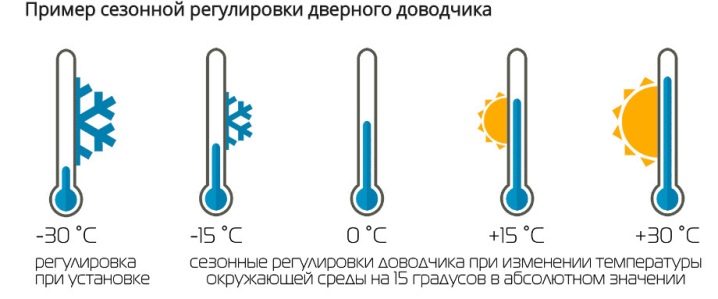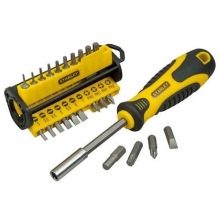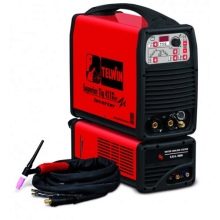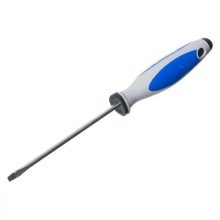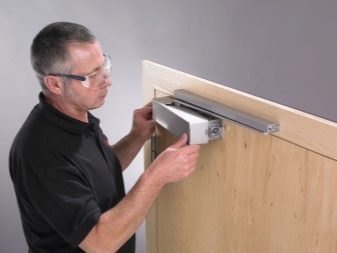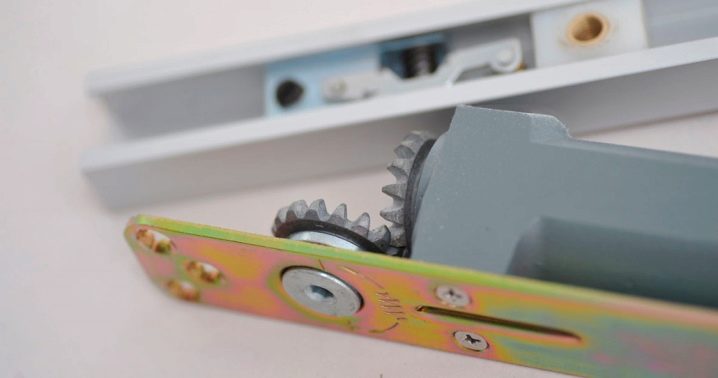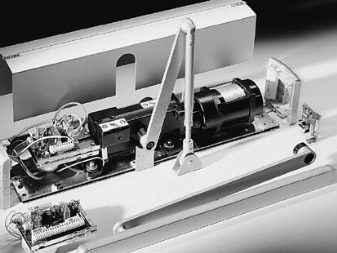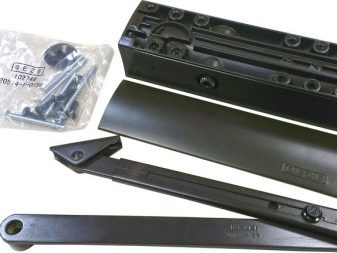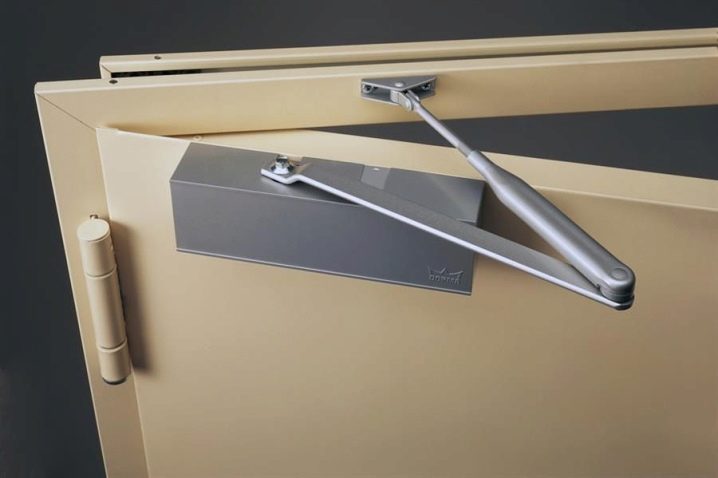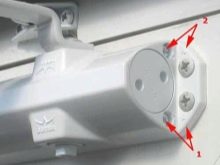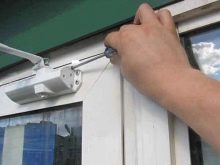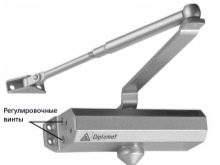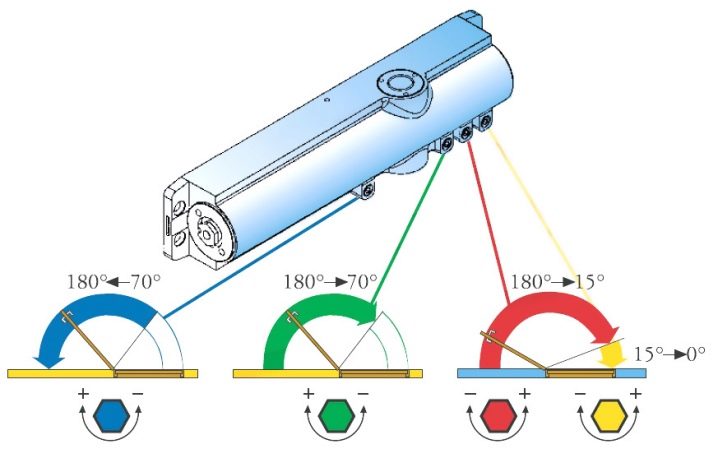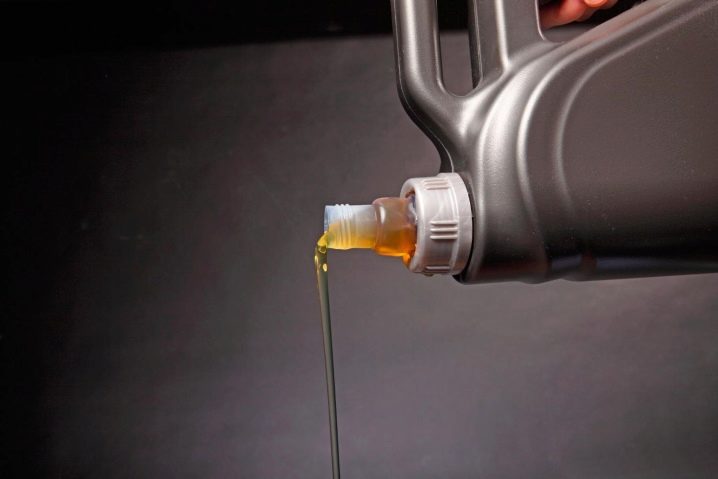Features of repair door closers
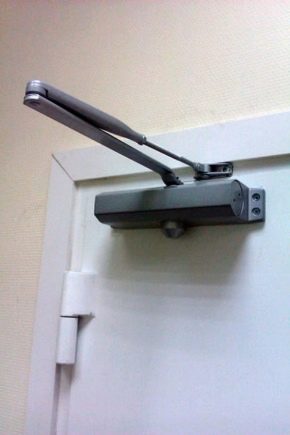
To close the doors manually, of course, polite people always tried. But it affects their mechanism badly. Therefore, special closers have widely spread - but these parts also have to be periodically repaired.
Types of closers
Already when buying door accessories, it is important to select them very carefully - then you will need to do repairs less often. It is worth paying attention to the design: the harder it is, the harder it will be to repair the product with your own hands. A good closer is one whose power is fully consistent with the weight of the canvas. Classification is made by the moment of inertia.Those products that allow you to smoothly adjust the force, are marked in a special way: the class of the system is indicated by a hyphen.
But this is not the only point to consider. We must also pay attention to the permissible climatic conditions. Take into account the minimum and highest operating temperature, differential level. As for the device of the working mechanism, there are three main types.
Spring. Morally obsolete, does not allow to control the opening and closing of doors.
Eccentric. It uses a figure cam that can set an arbitrary moment of inertia.
Gear. The most massive group allowing doors to close gently.
The transfer of force is often the hinge (lever) mechanism. Torque will be transmitted by folding lever. This design is quite reliable, it serves for a long time and makes repair much easier. If a device with a sliding channel is used, it will look aesthetically pleasing, but it will become more difficult to use the door. It is even harder to open the door with the floor installation of the door closer, in addition, this option is quite complicated.
The lever devices have a spring inside and a hydraulic system filled with oil. The task of this system is the depreciation of motion. When the door opens, the spring should be compressed. In this case, the fluid moves under the pressure of the piston, and the spring straightens. Since the tightness of the box can be broken, it is necessary to carefully monitor whether oil leaks.
Symptoms and causes of failure
We must not forget that the closer is a complex device. Therefore, its repair is not always possible. In some cases, of course, you can fix it - but it will be very expensive. Frequent defects are:
fluid leakage;
mechanical failure;
imbalance.
If the closer opens tightly, it is necessary to adjust it. For this purpose, use a pair of screws, both need to adjust strictly for themselves. Damage may be due to adverse weather conditions. If the temperature is constantly changing, if it is snowing or raining, if the air contains a lot of dust, the design can easily fail. When the door closer does not work or works hard, the breakdown may be due to illiterate use of the device.
Common errors are:
fixing the web in the open position;
opening the door to an unacceptable angle;
excessive force when opening or closing;
insufficient care for the closer.
In winter, the speed of the door closer decreases, and in the heat it increases. This is due to the change in viscosity of the working oil. Therefore, when changing the season, additional adjustment of one of the valves is required. If the door closer does not close the door completely, it is necessary first of all to be guided by the instructions of the instruction. Along with adjusting the speed, it is often necessary to adjust the intensity of the swat - to tighten the spring.
In some cases, the problem is connected with the insufficient strength of the apparatus itself. If this is the case, no adjustment will help. Yes, twisting the spring will then give a positive result, but the shelf life of the product will be reduced. It would be much more correct to purchase a more powerful closer and replace the existing one. It is important to bear in mind that problems may also be associated with errors when installing closers, as well as doors in general.
Required tools
For the simplest problems that can be fixed by yourself,required:
flat screwdriver;
figure screwdriver;
replaceable parts;
welding equipment.
DIY repair
Most often from the door closers fluid flows in the winter and autumn. This is due to the wear of the glands or the appearance of mechanical defects. If only part of the working staff is gone, fixing the device is pretty easy. It remains to find an extra hole and block it. But if there is no liquid inside, you can forget about the smooth opening of the door.
Let the product look the same as before - it will not be repaired. Almost always the body is changed completely. Much better if the lever is mechanically damaged. The most likely breakage bar. This part of the mechanism is outside and is fully accessible to all destructive influences.
It doesn’t matter what happened - whether the knee was deformed, whether it was twisted, or if the structure was completely destroyed. In all cases, special welding helps. But it is important to understand that in case of serious problems it will be too time consuming solution. Much more practical in many cases will be replacing the rod.They produce these parts in a wide range, so you need to check whether the purchased part is compatible with the installed design.
If you decide to carry out a complete repair yourself, you will have to dismantle the door closer. Carefully unscrew the fasteners. The mechanism after parsing laid out on a flat, solid surface. This will help prevent the loss of component parts. The first step is always to inspect the surface of the hull - this will help identify mechanical damage. The problem area is degreased, and then the damage is eliminated by cold welding or glue.
Then you need to fill the mechanism. For this purpose, release the hole where the adjusting screw is tightened. It is completely twisted. Warning: if constructively such an action is not provided, it is better to refuse it. Next, collect the working fluid in the syringe and inject through the hole.
It is not necessary to fill the oil with syringes. Any devices that help to feed a narrow jet under pressure are suitable. After that, you need to get rid of the air that will be present inside the cylinder.This is done by repeatedly simulating the opening and closing of the leaf.
We must act carefully and carefully. Both excessive strength and weakness in such actions are unacceptable. It happens that there is a shortage of oil. In this situation, add the missing volume, again pumped mechanism. Only after making sure of its normal operation, you can return the screw in place.
Operation check
It happens that the mechanism is operated without any special complications. In this case, there is no need for serious repair, especially in the replacement of parts and oil. But you should still control the changing characteristics of the closers. During prolonged use, the device must be adjusted. First of all, you need to monitor the speed and uniformity of the door.
An equally important point is how tightly the door adjoins the opening when the closer completes its turn. If discontinuities occur, almost always the cause is a temperature difference. Too fast or slow closing of the door is corrected by turning the control valves. To slow down the movement of the blade can move the valve in the direction of travel.Acceleration, on the contrary, requires turning the valve counterclockwise.
To adjust the speed of adjoining the door to the opening, it is necessary to turn the second valve. Sometimes you want to delay the canvas when closing. This is achieved by leaving the door open at a right angle. Bringing her into such a position, they firmly tighten the lock. But you can not turn it more than 2 turns.
Precautionary measures
In order to repair the closer less frequently, it is necessary to inspect it at least once every 6 months and eliminate the defects found. In everyday use can not:
“Help” the door closer to close the door;
interfere with closure manually or with the help of other devices;
hang heavy objects on the canvas;
allow children to use the door as a swing;
violate the provisions of the branded instructions.
When servicing, it is necessary to add or replace oil only with recommended samples. Each firm producing closers prefers one option or another. At the same time, serious research is being conducted showing how the reagent will affect corrosion and the mechanical properties of the product.In some designs, water-glycol formulations are used, in others - engine oil. Replace one mixture with another is unacceptable.
But if the exact analogue of the technical fluid is not commercially available, it is necessary to fill the door closer with synthetic motor oil for cars. This is almost a universal option, but still it is worth paying attention to its behavior at different temperatures. Due to the high cost of this oil, many recommend the use of a damping fluid. But here, too, it must be understood that it is used at its own peril and risk - no one, except the owner of the door, bears any responsibility for the consequences.
How to repair and adjust the door closer, see in the video.
